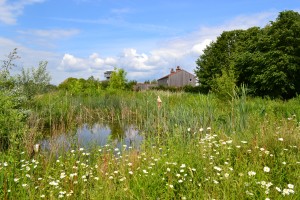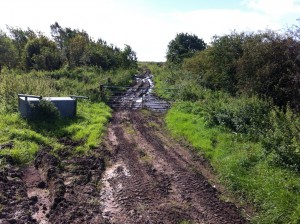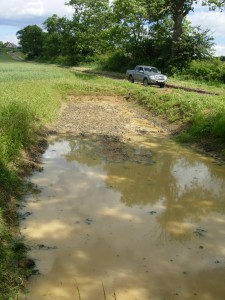WWT helps farmers to stop losing nutrients

Farmers and farm advisors in England can benefit from a new guide to help them use constructed wetlands to protect water from nutrient run-off and improve habitat for wildlife. It’s published today online by the Wildfowl & Wetlands Trust (WWT), supported by Natural England’s Catchment Sensitive Farming (CSF) project.
Many farmers already have measures in place to protect waterbodies from run-off, so this guide focuses on practical solutions for the thousands of easily missed instances where ‘just a little bit of dirty water’ escapes through a gate or road and into a stream.
The soil and manure in that water are valuable assets for farms - assets which become lost as they flow away. The pollution they cause is a major reason why less than 25% of our waterbodies are now classified as healthy.
The new guide has great ideas on how to simply and cheaply construct effective vegetated ditches, sediment ponds or more complex constructed wetlands to trap and treat pollutants. Brand new features include:
- An explanation of the types of constructed wetland that might qualify for funding under the new Countryside Stewardship Scheme, as well as other funding routes.
- An accompanying online tool that can estimate the space you would need for a constructed wetland.
- Additional case studies of a wide range of practical examples from across the UK and Ireland.
- Advice on how to improve biodiversity benefits from constructed wetlands.

WWT’s Catherine McIlwraith says:
"We’re farmers ourselves – we manage more than 3,000 hectares – so we know that trapping pollution takes time, money and space that is needed to keep a business profitable.
"This new guide helps farmers to do just that. It gives you great ideas for simple and low cost solutions that can make a big difference.
"Agriculture is a major contributor to pollution of our rivers and wetlands. Features like constructed wetlands can improve the quality of run-off from the farm while creating wildlife habitat at the same time."
The idea is to give farmers and farm advisors as much information and as many ideas as possible up front about design, permits and costs so they can make the best choices for specific land and farm needs. They can then seek further specialist advice – including free advice from Catchment Sensitive Farming in target areas.

The guide has useful case studies, including one in Leicestershire where it’s estimated that half the phosphates polluting the River Eye come from agricultural sources. A number of silt traps have been created, either in streams or by digging pits in the clay at the bottom of fields to capture the sediment that carries the phosphates. One of the traps has been restored as a ‘wetland area’ which is attracting wildlife including two short eared owls.
Constructed farm wetlands provide specific solutions for specific circumstances. They can also help to reduce flooding during heavy rainfall by releasing water at a steady pace, can become a welcome hotspot for birds, amphibians and insects and be a pleasant addition to the landscape.
The guide was officially launched today at the Farmer’s Club in Westminster, at an event sponsored by Kubota (UK) Limited, manufacturers of manufacturers of agricultural, construction and groundcare machinery.

